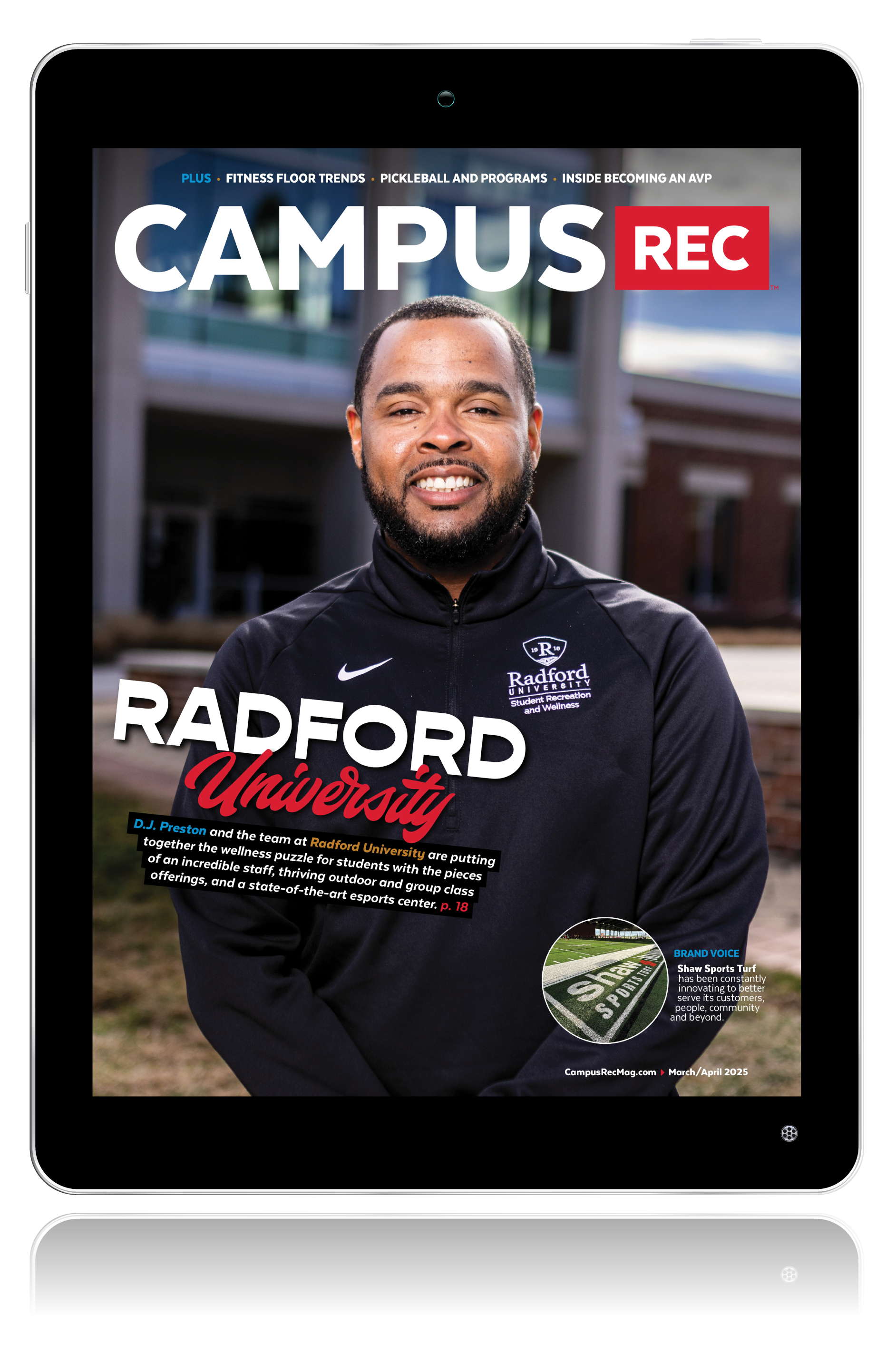Most adults look back on college fondly. With all of the opportunity, learning and of course fun, many remark those four years in college were the best years of their lives. However, for many students currently in college, facing the academic rigor and pressure, these four years are a time of stress. This is where campus recreation becomes increasingly important. Not only providing students with opportunities to stay active, but also healthy outlets to relieve stress.
At the College of William & Mary, university officials understand the extreme academic rigor placed on students. Therefore, they have made Health and Wellness a priority on campus. After restructuring the Division of Student Affairs, they developed five thematic areas, one being health and wellness. The Counseling Center, Student Health Center, Campus Recreation and Health Promotion all fall under this thematic area. Along with this restructuring, plans for a new Integrative Wellness Center were also developed.
“The new building is intended to be a learning center for students to become active and mature consumers of what wellness looks like for them from a multi-dimensional perspective,” said Kelly Crace, Ph.D., the associate vice president for health and wellness. “We really wanted the building to capture the full continuum of wellness that includes a holistic, multi-dimensional approach. It will include health promotion and prevention all the way through to intervention. It is really intended to embody a division of integrated wellness. It will allow the center to be a place for students to not only access services, but to learn about the multiple dimensions of wellness.”
The Integrative Wellness Center, which is set to open in Spring 2018, will be home to the Counseling Center, Student Health Center, Health Promotion and several wellness-based activities of Campus Recreation, such as yoga and expressive movement. “We are the only office not moving our whole program over there because 10 years ago we got a new building,” said Linda Knight, the director of campus recreation. “We are going to move some of our wellness programs over to the new building. With that, we will have a modality room where we can do massage therapy, acupuncture and any other modality training. We will also have a studio where we can do wellness programs.”
As Knight explained, it is essential for Campus Recreation departments to expand their reach beyond just the physical. “I think people are starting to realize the importance of overall wellness,” she said. “It is not just about exercise. It is about taking care of yourself at every level. One of the nice things for us is campus recreation touches all eight dimensions of wellness and that is neat because not everyone has the ability to do that.”
While embracing the spiritual, emotional and other dimensions of wellness might seem outside of the traditional campus recreation realm, Crace said this is not the case. “I would love for campus recreation to own their identity and the integral role they play in wellness,” said Crace. “If you look at the various dimensions that are a part of campus recreation, you learn about leadership, your own body, you can heal and recover. There are so many areas where you can engage in from intramural sports to fitness and wellness, and what you are learning the whole time is the harmony that exists with you as an individual around the certain dimensions of wellness — spiritual, intellectual, emotional, etc.”










